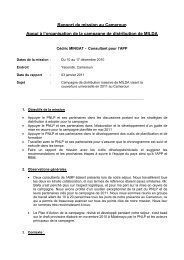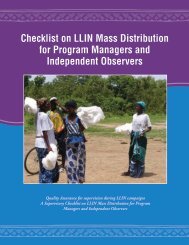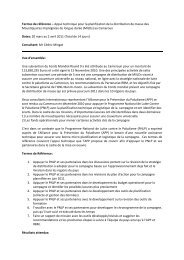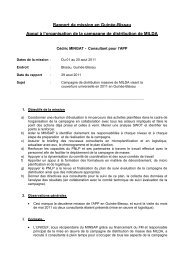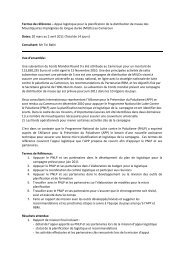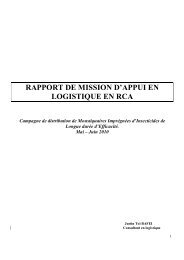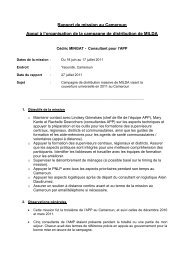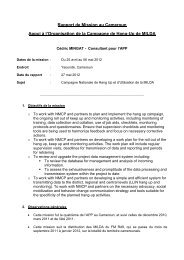Spots - Roll Back Malaria
Spots - Roll Back Malaria
Spots - Roll Back Malaria
- No tags were found...
Create successful ePaper yourself
Turn your PDF publications into a flip-book with our unique Google optimized e-Paper software.
STEP 7: MONITOR, EVALUATE AND REVISE YOUR SPOTSAs soon as the spots are supposed to air, collect and review the monitoring formsonce a week. If your spots are not being broadcast as scheduled, talk with the stationmanager to find out why. Then work together to ensure that they are broadcast onschedule. If your spots are being broadcast as scheduled, consider writing a letterthanking the station manager and staff and informing them of the impact of theirwork. This could motivate them to continue to promote health messages in thefuture.Evaluating your radio spotsAfter about three or four months, check whether your target audience has heard thespots and what they have learned from them. This information will help you todecide whether to continue to broadcast the same spots or to air new ones withdifferent messages. To help you organize your evaluation, see the Evaluation planningworksheet in Annex 2.A quantitative survey will give you the strongest results. This type of study asksquestions about these three areas:1. Has your target audience heard your radio spots? How many of them have heardthem? On which station(s) did they hear them? How frequently did they hearthem?• These questions measure reach (the percentage of your target audience youreached) and frequency (how often you reached them).2. What have they learned from the spots? What do they remember from what theyhave heard? How relevant do they think this is to them?• These questions measure recall—what people remembered—and howimportant they think it is.3. Is your target audience doing what you have suggested? Why or why not? Havethey tried to do it?• These questions measure to what extent listeners have tried the behavior andto what extent those who have tried it have adopted it.The simplest and least expensive way to get this information is to add questions ontoKnowledge Attitudes and Practices (KAP) studies and household surveys that theMinistry of Health or other public or private sector organizations conduct. However,these studies take time to analyze, and the information may not be available to youas soon as you would like. Also, planned KAP surveyers may not be interviewing theexact people who are your target audience. For example, your target audience isregular radio listeners, but KAP studies may be interviewing people who are notnecessarily radio listeners.Conducting your own small-sample studies (25-50 people) is another way to evaluateyour spots. These studies can be designed, conducted and analyzed in four to sixweeks. They can be conducted house to house or in a central intercept survey, in90 Spot On <strong>Malaria</strong>: Guide




